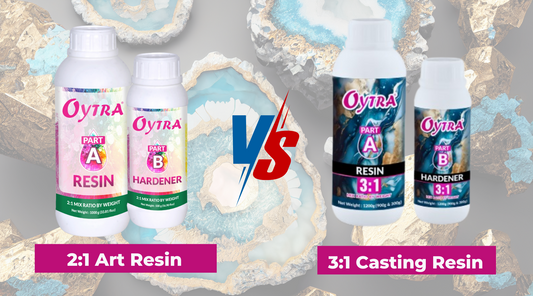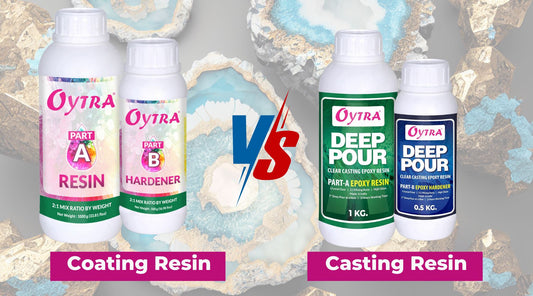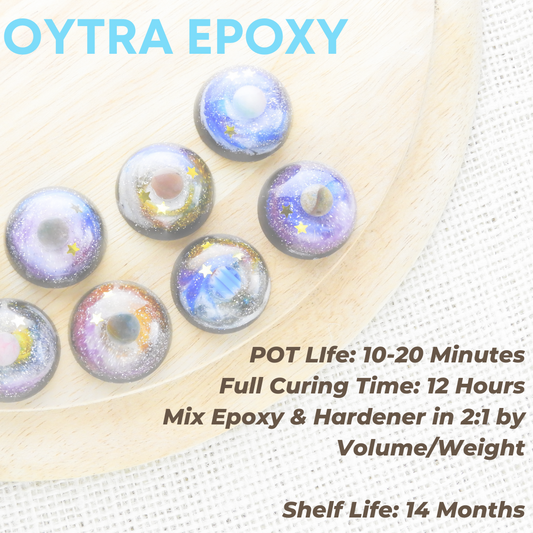Polymer Clay Blog
Oytra Polymer Clay Comparison Guide
🧱 Oytra Polymer Clay Guide: Signature vs Classic vs Basic vs Elastico vs Standard Polymer clay is one of the most versatile art & craft materials — perfect for jewelry,...
Oytra Polymer Clay Comparison Guide
🧱 Oytra Polymer Clay Guide: Signature vs Classic vs Basic vs Elastico vs Standard Polymer clay is one of the most versatile art & craft materials — perfect for jewelry,...

Top 10 Common Mistakes While Doing Resin Art
As much as art is about beauty, the process of creation is all about embracing chaos and imperfections. Becoming an artist is just as chaotic. You have to thrive in...
Top 10 Common Mistakes While Doing Resin Art
As much as art is about beauty, the process of creation is all about embracing chaos and imperfections. Becoming an artist is just as chaotic. You have to thrive in...

2:1 Art Resin vs 3:1 Casting Resin- Difference ...
If you’re new to the world of resin art, chances are you’ve come across a confusing mix of terms—art resin, casting resin, deep pour resin, 2:1 ratio, 3:1 ratio—and wondered...
2:1 Art Resin vs 3:1 Casting Resin- Difference ...
If you’re new to the world of resin art, chances are you’ve come across a confusing mix of terms—art resin, casting resin, deep pour resin, 2:1 ratio, 3:1 ratio—and wondered...
Difference between Air-dry clay and LaMaSa Clay
Air-dry clay and LaMaSa (Land of Make Believe Modeling and Sculpting Art) clay are both popular choices for sculpting and crafting, but they have some differences in terms of composition,...
Difference between Air-dry clay and LaMaSa Clay
Air-dry clay and LaMaSa (Land of Make Believe Modeling and Sculpting Art) clay are both popular choices for sculpting and crafting, but they have some differences in terms of composition,...

Oytra Art Coating Resin vs. Oytra Deep Pour Cas...
Choosing the right epoxy resin is crucial for successful art projects, and Oytra offers two exceptional options: the Deep Pour Casting Resin and Art Coating Resin. The Deep Pour resin...
Oytra Art Coating Resin vs. Oytra Deep Pour Cas...
Choosing the right epoxy resin is crucial for successful art projects, and Oytra offers two exceptional options: the Deep Pour Casting Resin and Art Coating Resin. The Deep Pour resin...

UV Resin vs Art Epoxy Resin
Exploring the Artistic Realm: Oytra UV Resin vs. Oytra Epoxy Art Resin + Hardener In the realm of resin art, the choice between UV resin and epoxy art resin +...
UV Resin vs Art Epoxy Resin
Exploring the Artistic Realm: Oytra UV Resin vs. Oytra Epoxy Art Resin + Hardener In the realm of resin art, the choice between UV resin and epoxy art resin +...
